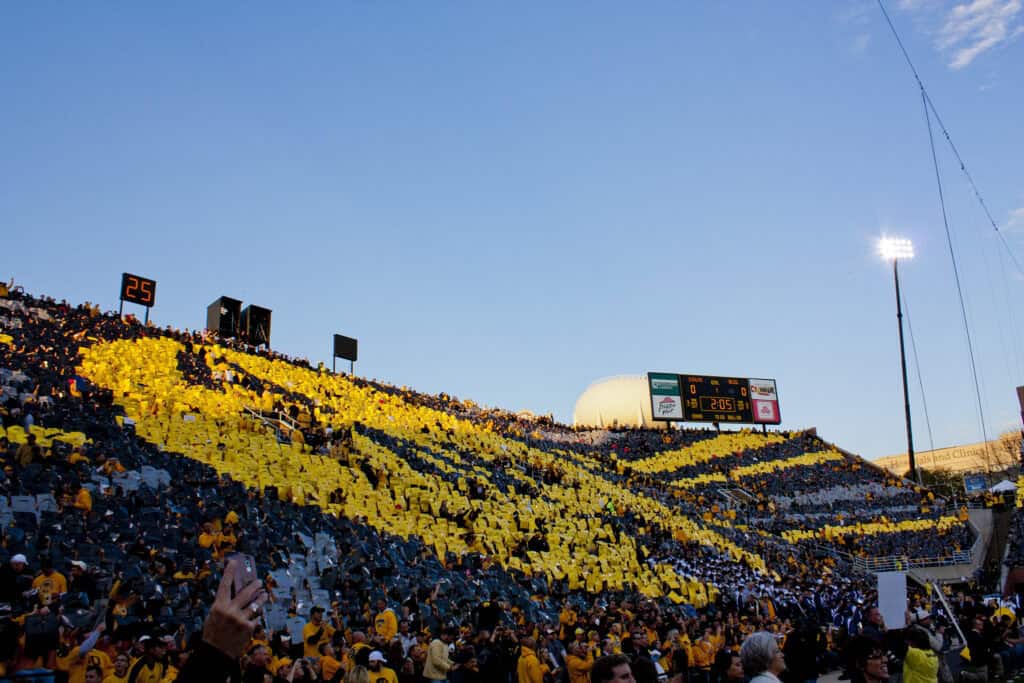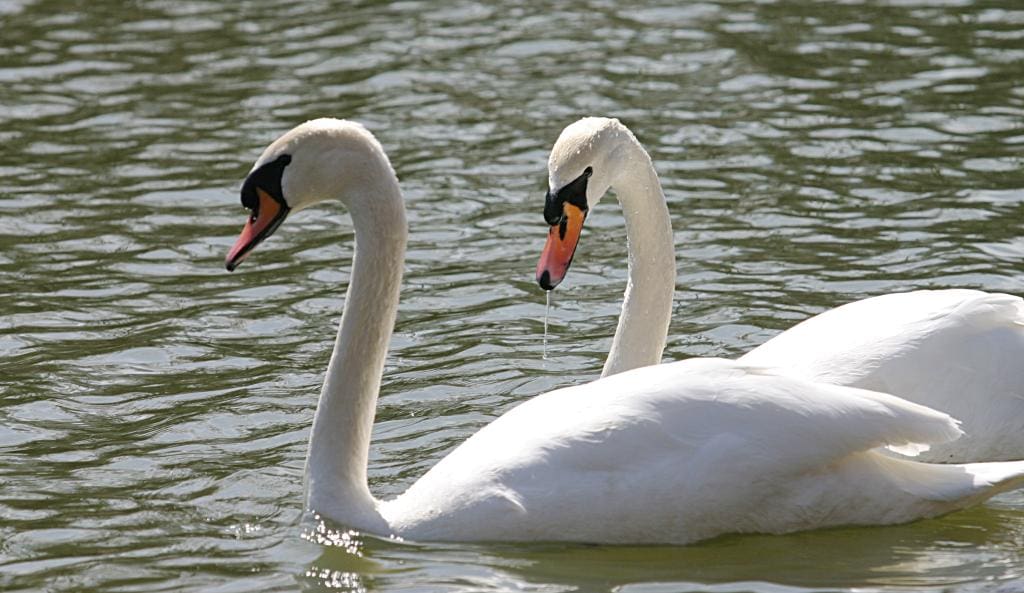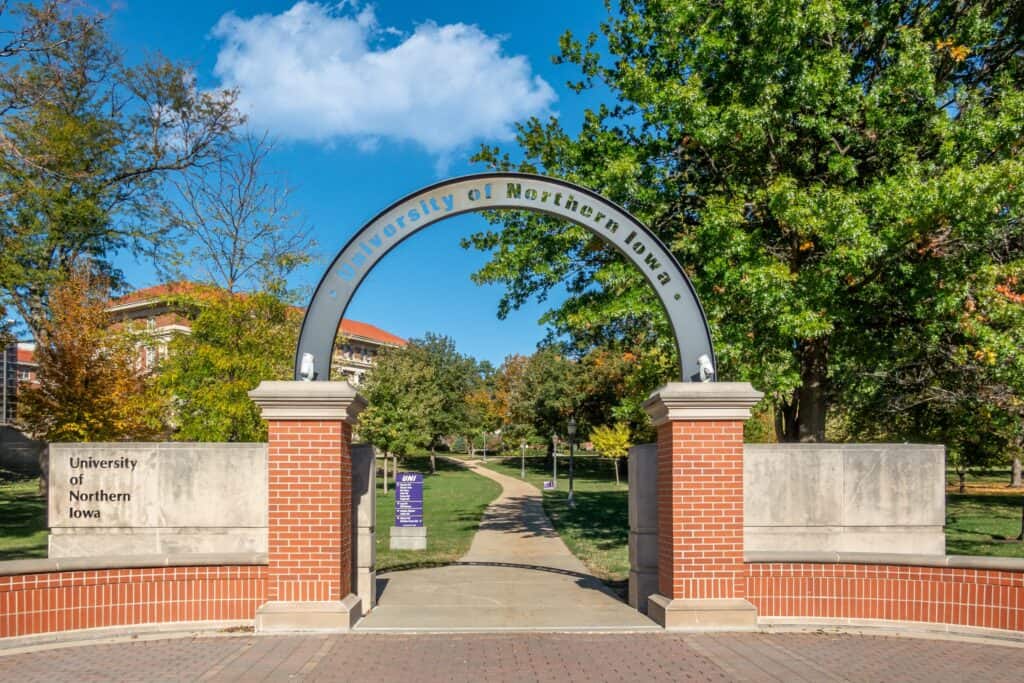6 fun traditions Iowa college students can look forward to
Every Iowa college has its own unique traditions that carry on from one generation of students to the next. Here are six of the most famous.
When it comes time for some students to select a college to attend after high school, the amount of options can seem daunting. Numerous factors are taken into consideration—namely, the type of programs the school offers and the cost of tuition/availability of student aid. And while it makes complete sense to be strategic and practical about where to attend college, might we politely suggest keeping a few fun traditions in mind, too? Yes, we know that the realistic things are more important, but so much of the college experience revolves around, well, just that: The college experience.
College is going to take up a significant portion of time for you or your child. It’ll lead to the forming of friendships and relationships, the creation of stories to tell, countless books to read and write about (and be tested on), and an incalculable amount of time spent simply being young. The atmosphere of these Iowa institutions varies greatly, and that element of academia should be factored into the larger equation. What is campus life really like? While we might not be able to divulge all the specifics, we can at least share six traditions Iowa colleges carry on that may persuade you or your child to attend one over the other.
From the Hawkeye Wave to campaniling at Iowa State, these unique practices will entertain and educate in equal measure.
1. The Hawkeye Wave, University of Iowa
The University of Iowa bills the Hawkeye Wave as “the best tradition in college sports,” and they may be onto something with that declaration. The ritual began in 2017 and involves all 70,000 (or more!) fans at Kinnick stadium turning toward the neighboring UI Stead Family Children’s Hospital at the end of the football game’s first quarter to wave to pediatric patients who are watching from their windows. Both the patients, and visiting family members, have this beautiful, inspirational moment of connection with the fans at Kinnick, which creates, in essence, “a wave of hope.”
UI notes that beginning in 2022, the school and the UI Department of Intercollegiate Athletics wanted to make the Hawkeye Wave even more special for the Stead patients and their families. They worked with the hospital to create a “Kid Captain program” where every week there’s a home game, one child is selected as the Kid Captain, and they’ll choose a song to go along with the Hawkeye Wave. It’s the kind of heartwarming tradition that helps create a sense of home away from home for students who choose to attend this university.

2. Lancelot and Elaine, Iowa State University
Iowa State University is home to not one, but four unique traditions. Each of these customs builds and maintains a deep sense of history for students, both past and present.
First up, Lake LaVerne on the ISU is home to a pair of mute swans named Lancelot and Elaine. According to the ISU Foundation website, the original pair was brought to the lake and named in 1935. A student at the time, Jean Nesinwanger, named two of the four swans unloosed on the lake “Lancelot” and “Elaine,” and was awarded $10 for giving them their monikers. Over the years, numerous Elaines and Lancelots have occupied Lake LaVerne, with new pairs being introduced when the existing swans die or “retire.”
The present pair consists of two females. If you’d like to learn more about the various Lancelots and Elaines, and how long they typically occupy the lake, click here.

3. Campaniling, Iowa State University
ISU is home to a campanile (AKA a bell tower) located on its central campus. A plaque located outside the structure reads, “This beloved campanile was built in 1898 and is home to the Stanton Memorial Carillon. The carillon bells ring daily and tradition states that a student officially becomes an Iowa Stater when kissed under the campanile as the carillon tolls midnight. This tradition is called ‘campaniling.'”
The folklore surrounding campaniling goes even deeper than simply arranging a kiss under the bell tower to certify your position as “a true coed,” though. Apparently, every Friday of Senior Week and during Homecoming, there’s a “Mass Campaniling” to ensure as many people carry out this tradition as possible.
And legend has it that any woman who completes her campaniling is supposed to anonymously drop jelly beans outside the door of each girl in her campus house afterward. If someone hasn’t shared a kiss under the campanile at midnight before her senior year, she’s supposed to scatter lemon drops instead.
4. The Zodiac, Iowa State University
In Gold Star Hall in the Memorial Union, there’s a bronze relief (a flat sculpture featuring three-dimensional designs) featuring the 12 designated astrological signs, known as “The Zodiac.” Students avoid stepping on The Zodiac, as do alumni, faculty, and staff. Apparently, the tradition began in 1929 when students at the time decided that stepping on the bronze sculpture was unlucky, and anyone who did so would fail their next test.
Don’t worry! If you do accidentally step on The Zodiac, you can reverse your bad luck by throwing a coin into the Fountain of the Four Seasons, which is located right outside of Gold Star Hall.
5. Lake LaVerne, Iowa State University
Lake LaVerne isn’t just home to Lancelot and Elaine— it has a tradition of its own, too. For all the lovebirds and hopeless romantics attending ISU, if you want your relationship to last forever, you’ll need to silently walk around the lake three times with your significant other. Rumor has it that if you do, the two of you will eventually get married and spend your lives together. Is it actually true? Well, there’s only one way to find out!
6. De-capping Ceremony, University of Northern Iowa
Finally, at the University of Northern Iowa, there’s a tradition that takes place at the end of the first semester of freshman year, known as the “de-capping ceremony.” Beginning in March 1923, male freshmen were required to wear a green beanie, and female freshmen were required to wear green armbands. Over time, the custom expanded so that both men and women wore the beanies around campus. Then, at the end of their freshman year, they would finally be allowed to get rid of their beanies during a campus ceremony. Some years, like in 1953, students would burn the hats in a bonfire after the “de-capping” took place.
If you’d like to learn more about the tradition and ceremony, and browse through some amazing pictures from the past, click here.




